 Your new post is loading...
 Your new post is loading...
Native Insider: Part of the challenge with "native" is that each organization has a different understanding of what it is. For the purposes of the research, what is your definition of native advertising?
Wu: In our study, we defined native advertising as sponsored content, which features content that is similar and consistent with publishers’ content and is often consumed by readers like non-sponsored content. I agree that there are also other types of native advertising, such as sponsored social media posts or sponsored hyperlinks. We focused on sponsored content because it is widely adopted by many news organizations, including very reputable ones like The New York Times.
Native Insider: Your research found that when content was identified as native advertising, readers expressed a lower opinion of the media outlet it was published in. However, the reputation of the company being promoted was not affected. Can you elaborate on this finding?
Wu: I think this was one of the most interesting findings in our study. We originally expected that both companies and media outlets would be negatively influenced. However, the media outlet was the only source that was affected. On one hand, this indicates that readers are not surprised by the sponsored content from a company, since similar covert marketing techniques have been utilized before, such as video news releases....
Therein lies the problem: native advertising is more effective because it masquerades as actual content. But it’s illegal to pass advertising messages off as editorial content. The Advertising Standards Authority in the United Kingdom, for instance, banned a native YouTube ad sponsored by Oreo that featured two well known video bloggers because the agency felt it was not clearly identified as marketing communication.
Stateside, the Federal Trade Commission (“FTC”) has long waged war on false advertising—marketing or advertising communications that tend to mislead consumers. Recently, the FTC issued an “enforcement policy statement on deceptively formatted advertisements” giving advertisers and publishers alike a heads up: deceptive native ads will not be tolerated.
So how can your brand capitalize on native advertising without breaking the law? The FTC offers some insight in their guide, “Native Advertising: A Guide for Businesses.”...
Those 11 inspiring videos are all original feel-good New York Times productions, and as Digiday’s Lucia Moses noted this morning, the ad is intended to drive subscription signups forThe Times, with a prominent call to action at the top of the piece imploring readers to “Get with The Times.
”While this may seem bizarre and a little too meta for this early in the morning, it’s actually a shrewd move by The Times to grow their audience. Clearly, they’ve identified Mashable readers as potential Times readers and subscribers, and as a result, they’ve come to them with a month-long campaign of branded posts._
The Times also punched up the titles of the individual videos for a Mashable audience. “Tattoo Artist Gives Breast Cancer Survivors Nipples and Hope” was originally titled “The Nipple Artist,” and “Can Your Grandma Pump Iron Like This?” was called “Shirley and the Bodybuilder.”...
Programmatic advertising may be the sexy new buzz phrase, but more automation can lead to more clutter. When it comes to paid media on the web, the best way forward is to have fewer ads.
Ask any lifestyle magazine publisher how they’re making up for declining print revenue, and chances are they’ll mention e-commerce. But while countless publishers are struggling to drive dollars via online shopping, there’s a growing number of e-commerce companies moving in the opposite direction.
In recent months, customers of online-only retailers like Rent the Runway, JackThreads and Birchbox have received catalogs—yes, those old-school, printed booklets—in their mailboxes, while flash sale site One Kings Lane has been sending out “magalogs” combining decorating tips with photographs of rooms populated by the site’s ever-changing inventory....
Content marketing costs less than advertising, and more people engage with it.It sounds like a revolution but actually there are some rather unkind hidden truths in all of this.
Much like the pigs at the end of Animal Farm, with the evil predecessor gone, what’s replaced it looks… very similar indeed.George Orwell, Animal Farm: "Twelve voices were shouting in anger, and they were all alike. No question, now, what had happened to the faces of the pigs. The creatures outside looked from pig to man, and from man to pig, and from pig to man again; but already it was impossible to say which was which..."
Here's why native advertising is the opposite of porn.It's a do-over from the past 20 years of online advertising. It's a bold new path for brands and publishers. It's the hoary advertorial dressed up in 21st-century clothes.
Native advertising is at least some of these things. Top publishers and brands met in Washington, D.C., on Wednesday for an American Press Institute summit to determine whether it is also the industry's salvation.
Fittingly enough, the host of the event was Atlantic Media, whose flagship publication, The Atlantic, introduced the native-advertising industry's first scandal when it ran an article entitled “David Miscavige Leads Scientology to Milestone Year" on its site in January. Commissioned by the Church of Scientology, the article was labeled as advertising, but raised hackles among fans and critics. A day later, Atlantic Media issued a three-word apology: "We screwed up."...
A recent study conducted by BIA / Kelsey predicts that by 2017, social media advertising spending will have reached 11 billion dollars; a significant growth compared to 4.7 billion dollars last year. Business owners and investors are excited with this huge growth, but according to Ian Schafer, chief executive of Deep Focus, a full-service, interactive marketing agency, the ad agency may not be ready to deliver when 2017 comes.
Schafer points out the study conducted by YouGov, which showed that last year, only one out of 20 users in Facebook clicked at least one advertisement. In addition, less than ten percent of Facebook users think that targeted ads are relevant to their needs. One reason why Facebook ads have such a negative impact on users is because they appear to march into our private social media space, sending us spam messages, mobile banners, occupying the right side of our profiles, forcing us to watch 15 second video ads, and more....
Steve Rubel, our chief content strategist, and I have been visiting with media companies for the past three months to understand more fully the opportunity in paid content for PR firms....
It is clear that media companies are now willing, even eager, to explore the third way to revenue, beyond circulation and classic advertising, to a new hybrid model, which falls somewhere between the old advertorial and the novel sponsored content. The new mantra at Edelman is that the paid ought to support the earned and owned content, to make it work harder and more intelligently than a classic media buy that stands on its own. We need to flip the traditional model on its head, whereby media buying agencies act as the intermediary between client and media, extracting the best financial deal on the basis of mass purchasing power.
Our advantage will never be scale in buying; rather we will have a more intelligent approach, a smart bomb instead of multiple bomber runs. But to do this, we will have to be given access to some advertising funds to be used at our discretion when a story seems to be taking off in popularity. We also need some money to initiate a surround-sound approach from conference sponsorship to proprietary content creation to online discussion moderation and aggregation of related content. So clients will have to entrust us with some of the paid media funds, then hold us to even higher standards for delivery of results....
As absurd as it may sound, chatting with ads could become commonplace as speech-communication with computers continues to evolve. Just looking at ads is bad enough, so who would want to talk to them? While many people would likely answer "no one," voice-recognition software maker Nuance says the opposite is true. What Is A Voice Ad? Wanting in on the booming mobile ad market, Nuance developed a way for people to chat with ads much as they do with Siri on the iPhone. Called Voice Ads, the technology works off the Internet connection of any iOS or Android mobile device.... Hey. You. Get offa my phone!
Articles in a series on Mashable.com called “What’s Inside” looked for all the world like the hundreds of other articles on the digital media site. But journalistically, they were something very different.
The articles, about technology topics in a wide variety of products, including modems and theHubble Space Telescope, were paid for by Snapdragon, a brand of processor chip made by Qualcomm, and the sponsor of the series. Most were even written by Mashable editorial employees.
An article on Google Glass technology was shared almost 2,000 times on social media, indicating that readers may not have cared, or known, if it was journalism or sponsored content, although the series was identified as such. Advertisers and publishers have many names for this new form of marketing — including branded content, sponsored content and native advertising. Regardless of the name, the strategy of having advertisers sponsor or create content that looks like traditional editorial content has become increasingly common as publishers try to create more sources of revenue....
Learn how to use inbound marketing and native advertising together to drive measurable results. Native advertising is all the rage these days. Companies like BuzzFeed and ShareThrough have based their business models on the notion that in-stream, organic-like content will save the day and finally allow everyone to retire those tired and underperforming banner ads to a nice tropical island far, far away. In its current form, however, native advertising is destined to fail just like the banner ad failed. Why? Because most native advertising placements -- just like most banner ad placements -- are not structured with inbound marketing strategies that treat native advertising content creation as a starting point. Rather, the content is treated as the end point. In essence, most native advertising today is basically a branding play....
Native advertising, brand journalism — whatever you call it, the current ad-driven content boom provides a lot of opportunity. But for it to work, journalists and publishers need to think about their brand as much as the advertiser does.
|
Like most news publications, the 14 organizations that participated in a recent study of native advertising label the content to distinguish it from their independent editorial content. They said they were well aware of the need to maintain audience trust in the crowded news and information market.
However, in general, the use of the same storytelling conventions and formats as news in sponsored content has prompted user confusion and drawn the attention of the Federal Trade Commission.
The 14 publications that participated in "The Rise of Sponsored Content in Digital News Publications," a study I produced for the Tow-Knight Center for Entrepreneurial Journalism at City University of New York, maintained that native ads done well aren’t necessarily deceptive or even unwelcome. The key they said, is to provide engaging content that is relevant to the audience and to generally avoid making direct sales pitches.
“I don’t think anybody objects to native advertising. People just object to bad advertising,” said Sebastian Tomich, Senior Vice President Advertising & Innovation at The New York Times. “It comes down to quality, user experience and quality.”...
How do readers feel about all of this? Most research suggests that audiences prefer sponsored posts to banner ads, but they also appreciate it less than regular content. If you’ve come across sponsored content before, you’ll probably understand how it can be both confusing and frustrating.
In 2015, as brands continue to pour dollars into these projects, publishers will keep growing their resources and improving their output. Consequently, audiences will begin to realize that content underwritten by brands can be meaningful too.
Let’s look at some publishers that are currently leading the pack in terms of content quality, formatting and design, and reader experience:...
At a time when good-paying freelance assignments are harder to come by, many journalists are heeding the call of native advertising, where the pay is decent and the work is steady. But there’s a cost. Many worry about the impact on their credibility as a journalist. Some are even finding they aren’t so welcome back in newsrooms once they work for the business side.
In the latest in Digiday’s “Confessions” series, we talked to a veteran freelance writer who has written for top women’s magazines and other national publications about the dark side of native. In this case, the journalist was working for a publisher’s content studio, which assigned stories a given client wanted written....
Native advertising is paid content that matches a publication’s editorial standards while meeting the audience’s expectations.
Think Captain Morgan’s campaign on BuzzFeed in general, their 15 Things You Didn’t Know About 15 Captains, Commanders And Conquerors article in particular.
First off, the theme of the article matches the brand’s values: Captain Morgan was a real live pirate who thrived on adventure and raw conquest — a theme not too foreign to BuzzFeed readers.
Moreover, the article matches the editorial standards of BuzzFeed: a list with big images and short, quirky copy — a format their audience expects....
From rich media to programmatic buying, we've got you covered.
Anyone starting a career in the advertising industry is presented with a digital advertising ecosystem with numerous intricacies and a befuddling number of buzzwords and acronyms.
What is the difference between native advertising and sponsored content? Or programmatic buying and real-time bidding? We want to put you on the path of advertising jargon mindfulness. Below, you'll find easy-to-read descriptions of some of the industry's hottest buzzwords, the phrases you've heard a bunch of times but maybe don't quite totally understand....
The End of Advertising as We Know It--and What to Do Now | Fast Company
...Kodak filed for bankruptcy while Instagram was bought by Facebook for $1 billion. Airbnb is now filling more nights than Hilton Hotels. Nike+ Kinect Training [created by AKQA] is now "as good as a real trainer, costs less than a one hour’s lesson, and it’s 24/7 at home," as Chris Anderson put it.
The reality is this: Business ideas from the least expected players and angles will disrupt your brand faster than advertising can save it. A couple of years after the world’s biggest advertising award show ditched the word advertising, we’ve reached an inflection point: Advertising as we know it has come to an end.
Now what? Here are a few principles that can guide the shift from the Old World Order to the New World Order....
Read more: http://www.fastcocreate.com/1683292/the-end-of-advertising-as-we-know-it-and-what-to-do-now
We speak to two of the people involved in creating the news outlet's latest Snowfall-like immersive multimedia project....
Last week The New York Times website published a story called The Jockey, followed by publication in the sports section of the print edition on Sunday.
The Jockey is the latest immersive or multimedia reading experience created by the news outlet that brought us Snow Fall. The Jockey tells the story of Russell Baze, the first North American jockey to ride in 50,000 races, and does so through long-form text, video and moving graphics.This immersive story has a sponsor. Some have interpreted this as native advertising or sponsored content, and AdAge writes that these custom ad units are "designed to better fit the new environment" than the advertising within Snow Fall...-
Here it is. The 100+ Best Slides From Cannes Lions 2012. Now if you’ve been to the Cannes Lions International Festival of Creativity, you’ll know the vast array of amazing content on offer, but perhaps the only challenge you’ll have all week, is choosing what sessions to attend.
So, as he always does, my good friend Jesse Desjardins (@JesseDee) has curated the 100+ Best Slides from the entire Cannes Lions Festival, meaning if you missed a session, couldn’t remember that kick-ass slide or spent your whole Cannes Lions trip partying on the beach, you can utilise some of this to convince your boss you might have actually went to the sessions!...
Jay Rosen asks, reasonably, that people start drawing useful distinctions between buzzy terms like content marketing, sponsored content, native advertising, and even brand journalism. Here’s my stab at it:
The Native Matrix - Who is it written by? Editorial staff, Sales staff, ad agency, Brand execs - Who is it published by? Publisher: Public relations, Sponsored content/ Native advertising, Brand journalism/Thought leadership or Brand: Content marketing, Marketing, Blogging *Sponsored content is designed to be read; native advertising is designed to be shared. None of these distinctions is hard and fast, of course, but at least it’s a start; basically, it all comes down to who writes the content in question....
Traditional advertising just doesn’t work in social media — at least that’s what most folks working in this area believe. And, I agree with them. Using social networks as a tool for blasting noise, self-promotion, and generally disrupting the flow of conversation can devastate your brand. Even using Facebook ads (or newer LinkedIn ads) is generally pretty ineffective. But, does that mean we can’t learn ANYTHING from traditional advertising? My answer is NO! And, here’s why I think traditional advertising still has something to say about how we SHOULD do social media marketing — new media....
...As this year’s newest addition to the marketing jargon handbook, native advertising challenges brands to think differently about both social engagement and advertising, and requires marketers to appeal to prospective customers in unique ways. What are Native Ads? Native ads place brand content such as videos, photos and articles directly into a site, such as Facebook Sponsored Stories; Twitter's Promoted Tweets; promoted videos on YouTube, and promoted playlists on Spotify and Rdio....
ILate last year, yet another industry buzzword emerged: “Native Advertising.” The term has received a lot of media attention and excitement from brands, rich-media companies and publishers alike, and after cutting through the hype, one question still remains: What does it actually mean? At the basic level, native ads are paid experiences that are complementary to the platform and content in which they are presented. While examples include Sponsored Stories on Facebook or Sponsored Tweets on Twitter, this doesn’t quite do the term justice. Truly native advertising takes things one step further, referring to seamlessly integrating brands into the medium, so much so that the consumer gets more value from the advertising as part of a greater content consumption experience. As Peter Kafka wrote in a recent article, native advertising is about “selling stuff that people want to look at.” This is key to get people to start thinking about brands, without making the ad blatant or disruptive. This can happen on all media from broadcast to digital, print to mobile, using technologies and platforms that engage with native in mind....
|




 Your new post is loading...
Your new post is loading...
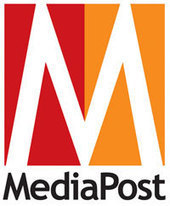

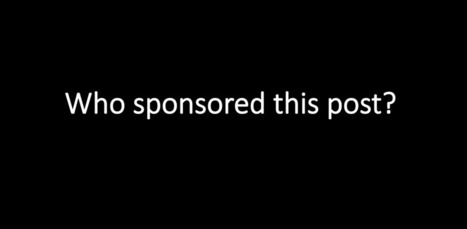
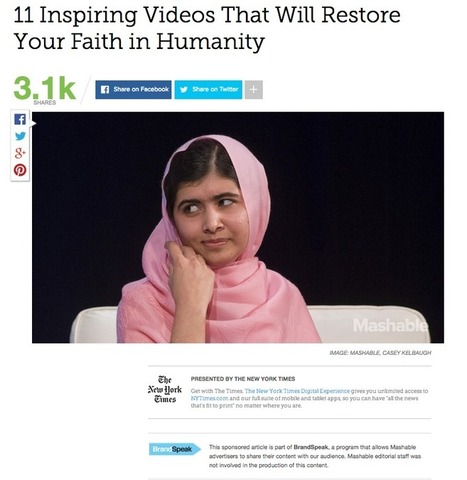


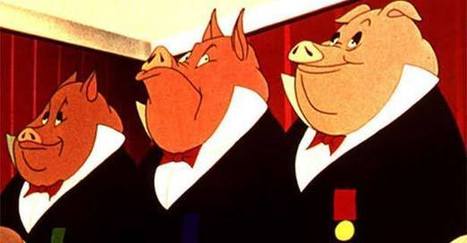
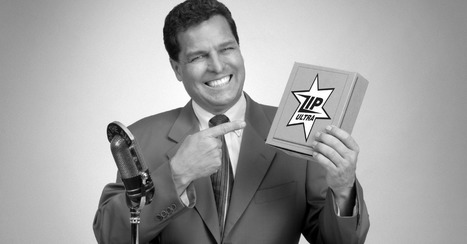








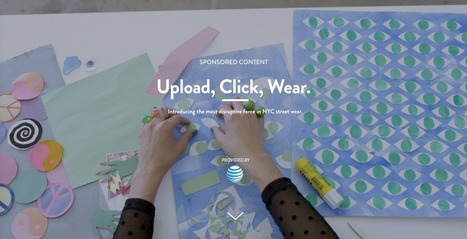



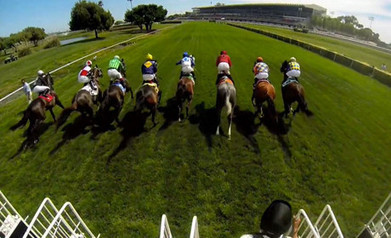

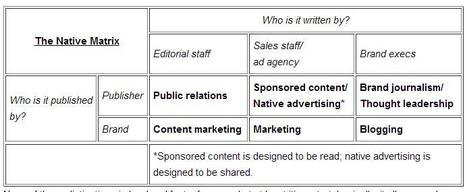







So what is your motivation for joining the My Advertising Pays network? Are you looking for time freedom, financial freedom, an executive lifestyle? Whatever your motivation is the goals you have can be achieved with My Advertising Pays. Simply stick to a simple daily routine to maximize your active number of credit packs. Read more...